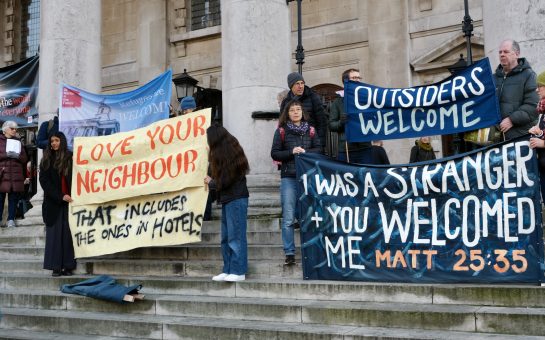The property bubble has burst and it looks like the London housing crisis is here to stay.
Registration to build new homes fell by 9% in the second half of 2015, yet the capital’s population is growing by four times this figure every year.
With the average cost of buying a home in London now at £540,000, there are 2 million Londoners renting privately, and the demand for affordable housing has never been higher.
But who’s to blame for this crisis, and what changes will London’s new Mayor, Sadiq Khan, bring to the market?
Who’s to blame for the housing crisis?
While it’s unfair to solely blame Boris Johnson for the shortage of housing in London, there’s no denying that the former Mayor has made things worse.
He has allowed property developers to build luxury flats beyond the reach of all but the most wealthy, and to market those flats to overseas investors.
He’s redefined the definition of ‘affordable housing’, instead building homes that are anything but.
Johnson set the annual housing target in his London plan at 42,000 despite evidence showing at least 49,000 homes were needed – and only half of these homes have actually been built.
So what is the new London Mayor going to do about the capital’s housing crisis? One thing is for sure; it isn’t going to be an easy problem to solve, or an enviable challenge.
More new homes
Prior to his election, Sadiq Khan pledged to build 50,000 new homes a year – and he promised that 50% of these homes would be affordable.
But this already seems out of reach, with the lead time on new build homes taking 2-3 years.
Khan has already asked TFL to fast track any surplus affordable land, to allow the construction of up to 10,000 new homes – a drop of water which will do little to ease the capital’s housing drought.
Diversity not affordability
Khan’s main focus is to create diversity of housing in the capital – diversity, rather than affordability.
He wants to focus on ‘first dibs for Londoners’, effectively elbowing out the current rise of overseas investors and making more housing available to those on low incomes wishing to buy or rent, and more home for London’s key workers.
His plans include, ‘a role for council homes, a role for shared ownership and a role for a new type of rental property called a London living rent (new builds where rent is capped at one-third of average local earnings).’
The great unknown
But what don’t we know about Khan’s plans for London? Well, his definition of ‘affordable housing’ is yet to be seen – who will build these homes and how many will be built?
In time, we’ll find out, with the delivery of the London Plan, where the mayor outlines his expectations for the housing market.
But this takes time, and with a 2-3 year lead time already applying to any new homes about to be built, it’s time that the market simply doesn’t have.
Deputy Mayor for housing, James Murray, has deemed a spend of one-third of the average household income on rent as ‘affordable.’
With an average full-time London salary of £34,000, developments would need to be built which include properties costing less than £930 a month, in order to reach current affordability definitions.
Shared ownership goals
Khan has already outlined the possibility of building shared ownership homes and allowing people to buy with a £5,000 deposit and rent or mortgage payments of £1,000 a month – but with property prices at an all-time high in the capital, it seems like this won’t be an easy objective to deliver.
Shared owners only receive a small rent discount – in addition, they are responsible for the flat’s upkeep and required to pay 100% of the service charge.
For example, a 35% share in a 1 bedroom flat in Canonbury Cross, Islington, would cost approximately £1,836 a month. It’s clear that substantial changes are needed if Khan is to ensure that flats really are ‘affordable’ for those most in need.
Team work required
With under 5,000 affordable homes built in the capital last year, Johnson’s lack of investment is partially to blame.
But there’s only so much that Khan can do – only part of London’s available land is under his jurisdiction, so it will be a case of working with other private and public sector bodies to reach his objectives.
What does this mean for Londoners?
Khan’s promise for properties to be marketed to Londoners before seeking overseas investors could mean that many new-build homes in wealthier parts of the capital, such as the north and south-west, become available for London’s key workers and those on lower incomes.
An affordability test for new homes would be determined by borough, depending on average salary.
So it should still cost more to rent or buy in more affluent areas of the capital, whilst new-build homes in less affluent areas should be more affordable.
Khan has also expressed concerns about private letting agents and landlords ‘ripping off’ tenants.
He has outlined plans to set up a not-for-profit letting agent which could potentially cover the whole of London, offering guaranteed tenancies of up to 3 years and rents which rise in line with inflation.
This could have a dramatic impact on buy-to-let landlords and overseas investors, with more affordable rental properties available to those that need them most.
Ultimately, housing is the biggest issue facing the UK’s capital, affecting London’s economy and workforce – luckily it looks like Sadiq Khan recognises this and seems prepared to take significant steps to change things.




